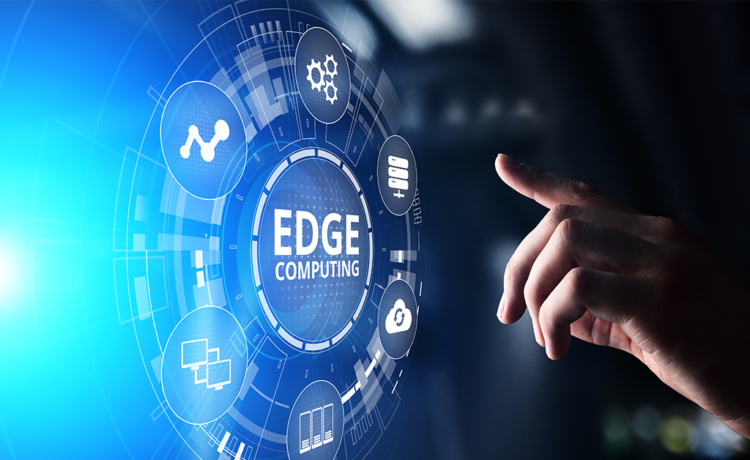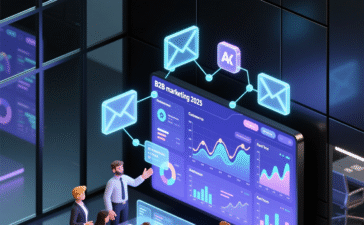How Edge Computing Reduces Latency: Key Mechanisms and Applications
Edge computing is a distributed computing model that processes data closer to its source. Unlike traditional cloud computing, which relies on centralized data centers, edge computing decentralizes data processing. This approach significantly reduces the time it takes for data to travel. In today’s digital world, low latency is crucial for applications requiring real-time responses. Edge computing plays a key role in achieving this by bringing computation closer to where data is generated. This article explores how edge computing reduces latency, its key mechanisms, and the applications that benefit from it.
Important Topics to Understand How Edge Computing Reduces Latency
- What is Edge Computing?
- Importance of Low Latency in Modern Applications
- Role of Edge Computing in Latency Reduction
- Applications that Benefit from Reduced Latency
- Challenges with Edge Computing
What is Edge Computing?
Edge computing is a computing paradigm that processes data near its source rather than relying on centralized data centers. This approach involves placing computing resources, such as servers and storage, closer to where data is generated. By doing so, edge computing reduces the distance data needs to travel, thereby speeding up processing times. This is particularly useful in scenarios where real-time data processing is crucial. For instance, IoT devices, autonomous vehicles, and smart cities benefit from this proximity, as it allows for quicker decision-making.
Furthermore, edge computing alleviates the burden on centralized cloud infrastructure. By handling data locally, it reduces the amount of data sent to the cloud, conserving bandwidth and lowering costs. This decentralized method also enhances data security and privacy since sensitive data can be processed locally without needing to travel to distant servers. Overall, edge computing transforms the traditional cloud model, offering a more efficient and secure way to handle data.
Importance of Low Latency in Modern Applications
Low latency is essential in today’s fast-paced digital environment, where speed and efficiency are paramount. It ensures that data processing and communication occur almost instantaneously. Here are the key reasons why low latency is crucial in modern applications:
Real-time Decision-Making
In industries like healthcare and autonomous driving, immediate decisions can save lives. For example, medical professionals rely on real-time patient data to make critical health decisions during surgeries or emergencies. Similarly, autonomous vehicles need to process sensor data instantly to navigate safely and avoid accidents.
Enhanced User Experience
Applications such as online gaming and virtual reality require minimal delays to provide a seamless and immersive experience. High latency in gaming can result in lag, disrupting gameplay and causing frustration among players. In virtual reality, even slight delays can break immersion and lead to motion sickness, negatively impacting user satisfaction.
Improved Operational Efficiency
Manufacturing and industrial processes rely on real-time data to monitor and adjust operations. For instance, automated assembly lines use sensors to detect issues and make adjustments on the fly. Low latency enables quicker responses to anomalies, reducing downtime and increasing overall productivity.
Financial Market Advantages
In high-frequency trading, milliseconds can make a significant difference in profits. Traders use algorithms to execute large volumes of trades at extremely high speeds. Low latency allows these transactions to be completed faster, giving traders an edge in capturing the best prices and maximizing returns.
Effective IoT Deployments
Smart cities and IoT applications need instant data processing to function efficiently. For example, traffic management systems rely on real-time data to control traffic lights and reduce congestion. Low latency ensures that these systems can react quickly to changing conditions, improving traffic flow and reducing travel times.
Role of Edge Computing in Latency Reduction
Edge computing significantly reduces latency by processing data closer to its source, minimizing the distance it needs to travel. This approach employs several key mechanisms to achieve low latency. Here are the main ways edge computing helps in latency reduction:
Data Localization
By processing data locally or near the source, edge computing eliminates the need for data to travel to distant centralized servers. This drastically cuts down on the time it takes for data to be processed and returned. For example, in a smart factory, data from sensors on machinery can be processed on-site, allowing for immediate adjustments to be made.
Decentralization
Edge computing decentralizes computing resources, distributing them across various locations. This distribution means data can be processed closer to where it is generated, enhancing speed and reducing latency. In a retail environment, for instance, customer data can be processed at the store level rather than being sent to a central server, enabling faster and more personalized customer interactions.
Optimized Data Routing
Edge computing can intelligently route data through the most efficient paths, avoiding congestion and reducing delays. By prioritizing critical data and processing it at the edge, latency is minimized. For example, in a telemedicine application, patient data can be routed directly to nearby healthcare providers, ensuring swift access to vital information.
Bandwidth Efficiency
By processing data at the edge, only essential data is sent to the cloud for further analysis or storage. This reduces bandwidth usage and associated delays. In video surveillance systems, for example, edge devices can analyze footage locally, sending only relevant data to the cloud, thereby improving response times for security alerts.
Local Caching
Edge computing enables local caching of frequently accessed data, which speeds up data retrieval times. For content delivery networks (CDNs), caching popular content at edge locations reduces the need to repeatedly fetch it from central servers. This results in faster content delivery to end-users, enhancing their experience.
Applications That Benefit from Reduced Latency
Here are the key applications that benefit from reduced latency:
Healthcare
Real-time patient monitoring systems and telemedicine rely on low latency to function effectively. Immediate data processing allows doctors to make swift decisions during emergencies. For instance, wearable health devices can detect irregular heartbeats and alert medical professionals instantly, potentially saving lives.
Autonomous Vehicles
Self-driving cars need to process vast amounts of sensor data in real time to navigate safely. Low latency ensures that these vehicles can make split-second decisions to avoid accidents. By processing data at the edge, autonomous vehicles can respond faster to obstacles and changing road conditions.
Manufacturing
Smart factories use real-time data to monitor and control production processes. Low latency allows for immediate adjustments to machinery and systems, improving efficiency and reducing downtime. For example, if a sensor detects a malfunction, the system can quickly shut down the affected equipment to prevent further damage.
Financial Services
High-frequency trading platforms depend on low latency to execute trades quickly and accurately. Even a millisecond delay can impact the profitability of transactions. Edge computing ensures that trading algorithms can process market data and execute trades at optimal speeds.
Gaming and Virtual Reality
These applications require near-instantaneous data processing to provide a seamless user experience. Low latency is crucial for preventing lag and ensuring smooth interactions. For instance, in multiplayer online games, edge computing can reduce delays, making gameplay more responsive and enjoyable.
Challenges with Edge Computing
Despite its advantages, edge computing faces several challenges that need to be addressed for optimal implementation. Here are the key challenges associated with edge computing:
Security Concerns
With data being processed at multiple edge locations, ensuring consistent security and data protection becomes complex. Each edge device can be a potential point of vulnerability. This decentralization increases the risk of cyber-attacks and data breaches, requiring robust security measures.
Infrastructure Costs
Implementing edge computing requires significant investment in hardware and infrastructure. Small and medium-sized enterprises might find it challenging to bear these costs. Additionally, the maintenance and upgrade of edge devices add to the overall expenses, making it a costly endeavor.
Management Complexity
Managing a distributed network of edge devices and ensuring seamless integration with centralized cloud systems can be technically challenging. It requires advanced management tools and skilled personnel to handle the complex infrastructure. This complexity can lead to increased operational overhead and potential inefficiencies.
Scalability Issues
As the number of edge devices grows, scaling the infrastructure to handle increased data loads while maintaining low latency can be difficult. Ensuring that each device operates efficiently and synchronizes with others is a significant challenge. This requires careful planning and resource allocation to avoid bottlenecks.
Data Consistency
Maintaining data consistency across a distributed network of edge devices is a significant challenge. Data processed at different locations needs to be synchronized to ensure accuracy. Inconsistencies can lead to errors and misinformed decisions, impacting the reliability of the entire system.
Power Consumption
Edge devices often require a continuous power supply to function effectively. Managing the power consumption of a large number of devices can be challenging. This is especially critical in remote or resource-constrained environments where reliable power sources may be limited.
Edge computing is transforming how we handle data, offering significant benefits in latency reduction. By understanding its mechanisms and applications, we can better appreciate its potential and address its challenges for a more connected and efficient future.





